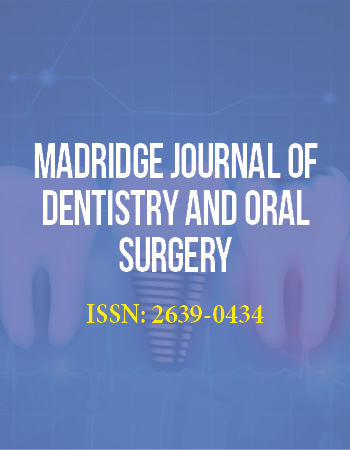International Conference on Dentistry
April 3-5, 2017 Dubai, UAE
Preventive and interceptive orthodontic treatment: Scope, limitations and expectations
Ajman University, UAE
Early in the recorded History there were references to dental variations and to the role that orderly transition of the primary to permanent dentition plays in normal development; Celsus observed in 25 B.C. That over retention of primary teeth could Cause Displacement of developing permanent teeth and that finger pressure seemed to help guid the permanent tooth into place after the primary tooth was removed, it is accepted that normal primary dentition and a normal transition from the primary to permanent dentition are necessary to establish a normal adult occlusion.
In the past, children are to begin orthodontic treatment when they reach age 12 to 14 years since all the permanent teeth have erupted by this time. Most dentist extract a tooth to correct bite problem or teeth crowding. However, according to the American Academy of Orthodontics, all children should be brought to the dentist for proper orthodontic assessment by age 7 when the first set of permanent molars had erupted. A prime example of preventive treatment involves space maintenance from premature loss of teeth. Depending on the clinical situation, several techniques can be used to maintain space; The orthodontist who has a much better conception of the possibilities of the prevention of malocclusion unfortunately does not see his patients until the case is ready for corrective measures rather than preventive. Treating children at much earlier ages, say between 7 to 11 years, will take advantage of the childʼs continuing growth and they are more compliant and receptive with treatment at this age.
With interceptive orthodontics, fewer teeth are extracted and there are better results, early Interceptive orthodontics will use patient growth to get best outcome and limit comprehensive face of fixed orthodontic treatment.
For a dentist seeing a young patient with malocclusion the first question is wether orthodontic treatment is needed. if so, the next question is: when should it be done?finally, who should do it? Dose this patient need referral to a specialist?
In this presentation we will cover our current understanding of preventive and interceptive orthodontics; indications ,limitations and current procedure done under both categories. Referral concept will be discussed with great emphasis on day to day clinical scenarios that will face general dental practitioner, an example of that patients presenting with posterior or anterior cross bite, impacted teeth and space loss due to premature loss of primary counterpart.
management of oral habits i,e (thump sucking, mouth breathing) is essential toward normal development of both dental arches and dentition; ectopic eruption of teeth, supernumerary teeth and delayed eruption all of the above mentioned conditions come under title of interceptive orthodontic treatment which should be an established concept in a successful dental practice.
understanding normal growth and development of dentitions is key factor in understanding preventive and interceptive orthodontic Treatment; The three major factors involved in development of dentition are Eruption, Drift and Equilibrium, will be covered in the presentation, knowledge of some of the causes of the development of malocclusion and the interceptive measures that may be undertaken during development to limit or reduce the severity of the malocclusion, The rationale and limitations of these procedures will also be discussed.


